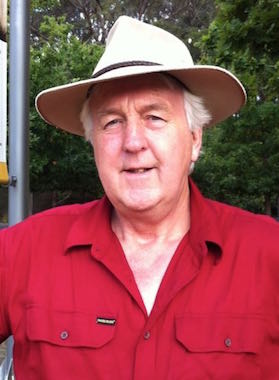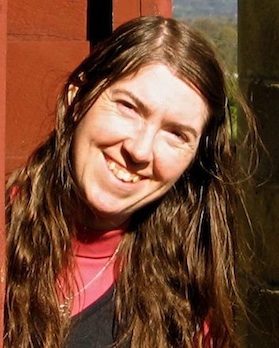About Space Pioneers

Kim Peart ~ Director
Born in 1952, Kim was raised in the farm lands and forested hills of Howrah by the shore of the River Derwent in Tasmania, where many happy hours were spent playing in the sand on the beach building dreams. His young eyes watched the farms turn into a modern suburb, but the hills and beach remained and the view across the harbour to Mount Wellington rising above Hobart like a brooding mother. School years included Scouts and Army cadets, along with adventures into the snow in the mountains in winter. After school Kim took to the path of a visual artist, learning to paint with oils on canvas, launched a Viking Society in 1975 and then in 1976, in the spirit of adventure, Kim joined the L5 Society to become an advocate of space exploration and development. He went on to found the Southern Cross L5 Society in 1981, now the National Space Society of Australia, which was given a national launch at the Observatory at The Rocks in Sydney in early 1982. After visiting India in 1986, he became concerned about threats to the health of our environment and wondered what we needed to do to assure human survival and be able to live in harmony with Nature. As an urban environmentalist, Kim gained an entry among Tasmania's top 200 movers and shakers in 2007 at number 123 for ~ "An urban bushland conservationist who has worked tirelessly over the years to maintain walking tracks and protect wildlife from the encroachment of bush-front housing developments." Princess Mary of Denmark, who was born in Tasmania, gained the number one place on that list. The search for answers to the question of how we can best live with Nature led to writing the document ~ Creating A Solar Civilization ~ in 2006, revised in 2012. It became apparent to Kim that the only way that humankind could hope to live in harmony with Nature, would be by expanding human civilization beyond Earth; that by clinging to the Earth we present a risk to our home planet that is only going to get steadily worse. Kim could also see that we needed an industrial presence in space, simply to be able to defend the Earth from killer asteroids that could send humankind into extinction, as happened to the dinosaurs 65 million years ago. After moving to Queensland, Kim founded Space Pioneers with his wife, Dr Jennifer Bolton, in 2012 to promote space futures as the essential way to win back a safe Earth, assure human survival and create a stellar economy that will send poverty into history. Since 2007, Kim has been investigating the use of Second Life and other virtual worlds as an excellent way for people to meet globally and plan local action toward building celestial futures; and in the virtual worlds we can build and use full-size working models of our future in space, including the apartments we would like to live in. Kim believes we can build that which we imagine, on Earth and in space. We face limits on Earth and we must learn to live within those limits, but in space and among the stars there are no limits. Kim knows that we are only limited by our failure to imagine. He says all work begins with a dream, which is then created with our hands. We are no longer confined to the Earth, if we will dream among the stars and use our hands to create new opportunities across the Universe.

Dr Jennifer Bolton ~ Science Officer
Dr Jennifer Bolton has a Bachelor of Veterinary Science from the University of Sydney and a Postgraduate Diploma in Science (Biochemistry) from the University of Queensland. Her PhD in Molecular Genetics, also from the University of Queensland, focussed on the role of retinoic acid-responsive genes in embryonic development. Jennifer has held research positions with the School of Veterinary Science at the University of Queensland and the Division of Livestock Industries within the Commonwealth Scientific and Industrial Research Organisation (CSIRO). In her current role as Science Officer with Space Pioneers she provides technical support for web-based and virtual world projects as well as researching emerging technologies that will impact life on Earth and in space including robotics, artificial intelligence, virtual reality and next-generation virtual world platforms. Jennifer's research interests also include the use of space technology to improve environmental conditions on Earth. A current project explores the potential of space-based solar power to combat climate change by providing the energy needed to reduce atmospheric carbon dioxide concentrations through ambient air capture and carbon dioxide utilisation.
Publications
Mariasegaram, M., Harrison, B.E., Bolton, J.A., Tier, B., Henshall, J.M., Barendse, W. and Prayaga, K.C. (2012) Fine-mapping the POLL locus in Brahman cattle yields the diagnostic marker CSAFG29. Animal Genetics 43(6), 683-688.
O'Leary, C.A., He, X., Bolton, J.A., Gobe, G. and Duffy, D. (2009) Haplotype sharing excludes orthologous COL4A3, COL4A4 or MYH9 loci in hereditary nephritis in bull terriers. Animal Genetics 40(2), 252-253.
Bolton, J.A., Wood, S.A., Kennedy, D., Don, R.H. and Mattick, J.S. (1999) Retinoic acid-dependent upregulation of mouse folate receptor-alpha expression in embryonic stem cells, and conservation of alternative splicing patterns. Gene 230(2), 215-224.
